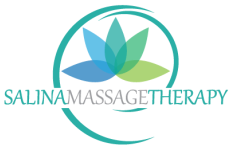Massage and the "Relaxation Response"
By Joe Rubino
Years ago I was introduced to the term "The Relaxation Response" by Dr. Herbert Benson. Benson documented the healthful effects of meditation in Tibetan monks who meditated regularly. When meditating, these monks consistently experienced decreased respiratory rates, decreased blood pressure and decreased heart rates. They also experienced increased blood flow. Thus their hearts were pumping out more blood to the body while working less hard. Meditation had set off the healthful effects of the relaxation response of the body.
In my 20 years of practice of Massage Therapy and Holistic Health Coaching, I have often suggested to clients to try meditation. More often than not I hear "I don't have the time", or "I can't sit still long enough", or "It just doesn't work for me". In essence, many people find meditating to relax to be stressful. Yet these same people manage to lie still for one hour while receiving a massage, and just like the meditating monks, those receiving massage enjoy the healthful benefits of activation of the relaxation response.
So if the stress response (see previous blog) is actually the fight or flight response, then let's go ahead and call the relaxation response the “Chill and Be Still” response.
Most people do associate receiving a massage with relaxation. What they often don't realize is the profound, healthful physiological benefits massage creates within their body.
Clients not only leave a massage session feeling relaxed, they leave functioning at a healthier level. I definitely believe without a doubt that my regular massage clients get sick less often than the general population. Bottom line, regular activation of the relaxation response gets you healthier and significantly helps to keep you healthy. And one of the best ways to activate your body’s relaxation response is by getting a massage.
So what are you waiting for? Get a massage today!
Call me, Joe Rubino, at 785-819-4392.
By Joe Rubino
Years ago I was introduced to the term "The Relaxation Response" by Dr. Herbert Benson. Benson documented the healthful effects of meditation in Tibetan monks who meditated regularly. When meditating, these monks consistently experienced decreased respiratory rates, decreased blood pressure and decreased heart rates. They also experienced increased blood flow. Thus their hearts were pumping out more blood to the body while working less hard. Meditation had set off the healthful effects of the relaxation response of the body.
In my 20 years of practice of Massage Therapy and Holistic Health Coaching, I have often suggested to clients to try meditation. More often than not I hear "I don't have the time", or "I can't sit still long enough", or "It just doesn't work for me". In essence, many people find meditating to relax to be stressful. Yet these same people manage to lie still for one hour while receiving a massage, and just like the meditating monks, those receiving massage enjoy the healthful benefits of activation of the relaxation response.
So if the stress response (see previous blog) is actually the fight or flight response, then let's go ahead and call the relaxation response the “Chill and Be Still” response.
Most people do associate receiving a massage with relaxation. What they often don't realize is the profound, healthful physiological benefits massage creates within their body.
Clients not only leave a massage session feeling relaxed, they leave functioning at a healthier level. I definitely believe without a doubt that my regular massage clients get sick less often than the general population. Bottom line, regular activation of the relaxation response gets you healthier and significantly helps to keep you healthy. And one of the best ways to activate your body’s relaxation response is by getting a massage.
So what are you waiting for? Get a massage today!
Call me, Joe Rubino, at 785-819-4392.


 RSS Feed
RSS Feed